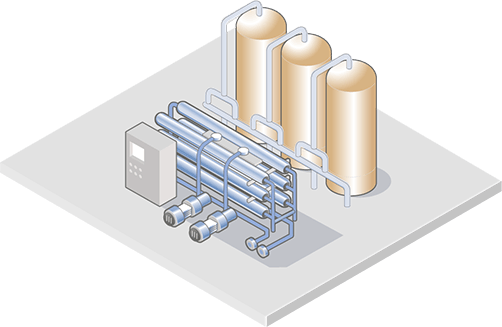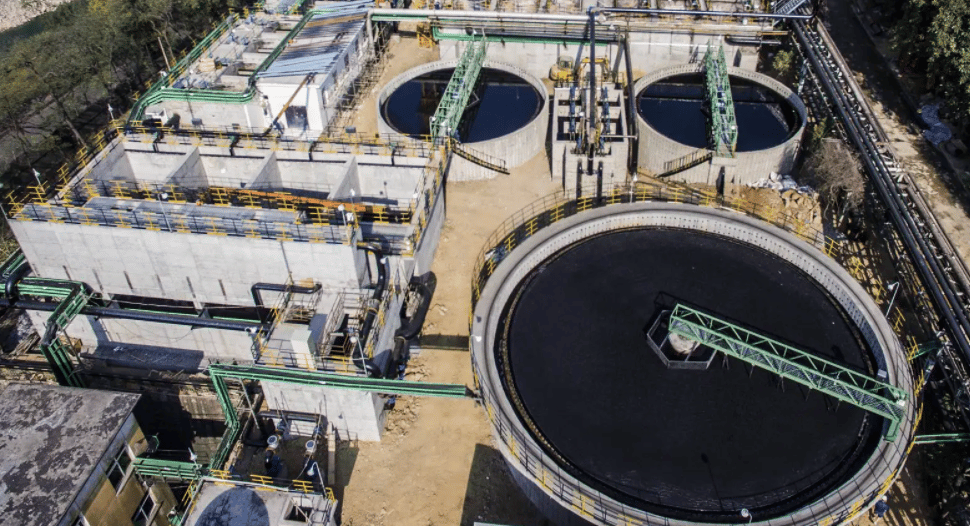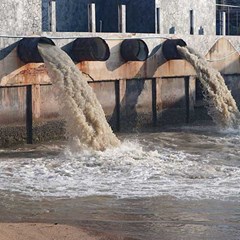Innovations and Advancements in Industrial Waste Water Therapy Technologies
The landscape of commercial wastewater therapy is undertaking a transformative change, driven by developments that enhance both effectiveness and sustainability. Arising modern technologies, such as membrane layer bioreactors and microbial gas cells, are redefining impurity removal processes while adding to energy generation. Furthermore, source recovery approaches are obtaining grip, aligning with circular economic climate principles. As governing requirements progress, the assimilation of AI and artificial intelligence right into wastewater administration systems promises to ensure and improve operations conformity. The full ramifications of these innovations raise important inquiries concerning their scalability and long-term impact on industry practices.
Introduction of Waste Water Therapy Technologies
Wastewater therapy innovations encompass a variety of methods developed to get rid of contaminants from industrial effluents before their release into the setting. These modern technologies are critical for keeping ecological balance and making certain conformity with ecological regulations. The primary classifications of wastewater treatment include physical, chemical, and biological techniques, each serving distinct purposes based upon the nature of the contaminants present.

Biological treatment techniques employ bacteria to deteriorate raw material, making them specifically reliable for organic-rich effluents. Techniques like triggered sludge and biofilm activators harness the natural destruction capacities of germs, leading to considerable reductions in biochemical oxygen need (FIGURE)
Advanced Filtering Methods
Advanced filtering methods represent an essential development in the realm of commercial wastewater treatment, boosting the effectiveness of contaminant elimination processes. Industrial Waste Water Treatment. These techniques incorporate a series of technologies, including microfiltration, ultrafiltration, nanofiltration, and turn around osmosis, which supply sequential obstacles for various bit dimensions and chemical frameworks
Microfiltration and ultrafiltration use membrane layer systems to remove suspended solids, bacteria, and bigger natural particles, boosting the quality of effluent prior to further treatment. Nanofiltration connects the space in between ultrafiltration and turn around osmosis, effectively removing natural compounds and divalent ions, hence decreasing the tons on downstream procedures.
Reverse osmosis supplies the highest level of purification by allowing only water and tiny molecules to go through its semi-permeable membrane layers, making it suitable for reclaiming premium water from commercial effluents. Current improvements in membrane layer modern technology, consisting of the advancement of more long lasting and fouling-resistant materials, have actually significantly boosted functional performance and decreased prices.
Incorporating these advanced filtering techniques not only enhances the general treatment process however also adds to sustainability efforts by making it possible for water reuse and resource healing in industrial setups. (Industrial Waste Water Treatment)
Organic Therapy Developments

Additionally, the growth of crafted biological systems, such as membrane layer bioreactors (MBRs), integrates biological treatment with innovative membrane filtering. This integration allows for check this site out greater effluent quality and minimized footprint, making it appropriate for space-constrained industrial facilities. Technologies in genetically engineered bacteria have likewise arised, boosting the biodegradation of details contaminants, such as drugs and hefty steels, that are traditionally challenging to remove.
Furthermore, the implementation of bioaugmentation strategies, where useful microorganisms are presented to enhance the existing organic treatment procedures, has actually shown encouraging cause enhancing therapy performance. These developments collectively represent a pattern towards even more effective and lasting biological treatment methodologies that can adjust to the progressing complexities of industrial wastewater streams. As sectors proceed to focus on environmental conformity, these organic advancements will play an essential duty in wastewater management.

Resource Recuperation Techniques
In industrial setups, the assimilation of resource recuperation methods has actually ended up being progressively crucial for enhancing sustainability and decreasing waste. These approaches concentrate on removing beneficial materials and power from wastewater streams, therefore changing possible contaminants right into recyclable resources.
One famous technique is nutrition recovery, where nitrogen and phosphorus, usually existing over in wastewater, are recorded and transformed right into plant foods. This not just minimizes environmental effects however likewise provides a round economy service for farming applications. Furthermore, innovations such as anaerobic digestion permit the conversion of natural waste into biogas, a renewable resource source that can balance out fossil fuel use in commercial procedures.
Furthermore, progressed filtering and membrane view it technologies promote the recovery of commercial by-products such as steels and salts. These recouped materials can be rehabilitated right into production procedures, minimizing the demand for virgin sources.
Future Patterns in Drainage Administration
As industries increasingly focus on sustainability, the future of wastewater monitoring is established to undergo substantial transformations. Technological advancements, such as expert system and maker learning, will enable more reliable monitoring and monitoring of wastewater systems. These innovations can anticipate upkeep needs, optimize therapy procedures, and enhance decision-making, ultimately decreasing functional costs and ecological impact.
In addition, the combination of round economic climate concepts will play a critical function in wastewater management. Industries are anticipated to move towards systems that not only treat wastewater but likewise recoup useful sources, such as nutrients, water, and energy. This shift will lessen waste click this and promote the reuse of materials, straightening with global sustainability objectives.
Emerging treatment methods, such as membrane bioreactors and progressed oxidation processes, will certainly additionally enhance the performance of wastewater treatment, enabling better effluents appropriate for reuse. Furthermore, regulatory frameworks are likely to evolve, highlighting stricter standards for wastewater discharge and motivating markets to take on ingenious treatment solutions.
Verdict
In final thought, the advancement of industrial wastewater therapy technologies demonstrates a considerable shift in the direction of boosted performance and sustainability (Industrial Waste Water Treatment). Innovations in innovative filtration techniques, organic treatments, and source recovery approaches highlight the market's dedication to environmental stewardship.
The landscape of commercial wastewater treatment is undergoing a transformative shift, driven by innovations that enhance both efficiency and sustainability.Wastewater therapy technologies encompass an array of methods created to get rid of impurities from commercial effluents before their release right into the setting.Harnessing the power of organic processes has led to significant innovations in the therapy of commercial wastewater.Furthermore, the application of bioaugmentation approaches, where helpful germs are presented to improve the existing organic treatment procedures, has actually revealed promising outcomes in enhancing treatment performance. These advancements jointly symbolize a fad in the direction of even more reliable and lasting biological therapy techniques that can adjust to the developing intricacies of commercial wastewater streams.